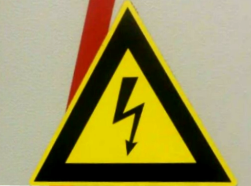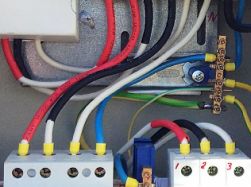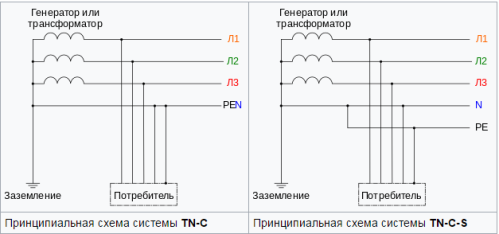Categories: Electrician at home, Safety precautions
Number of views: 27014
Comments on the article: 18
What is the danger of self-grounding in the apartment (alteration TN-C to TN-C-S)
 In the operation of home wiring, the most important issue is the safety of the operation of household electrical appliances. Grounding of electrical wiring is the main way to minimize the impact of electric current on a person in the event of a life-threatening potential on the metal case of household electrical appliances.
In the operation of home wiring, the most important issue is the safety of the operation of household electrical appliances. Grounding of electrical wiring is the main way to minimize the impact of electric current on a person in the event of a life-threatening potential on the metal case of household electrical appliances.
The problem of the lack of grounding in the apartment or in the house is quite common due to the power supply from outdated TN-C configuration networks in which the grounding of home electrical wiring is not provided.
To solve the problem, proceed as follows - ground the electrical wiring through the alteration of the TN-C system to TN-C-S. As a result, improper grounding of the wiring makes the operation of the wiring even more dangerous than in the absence of grounding per se. In this article, we will consider the danger of independent grounding through the alteration of the TN-C system to TN-C-S.
 To understand the essence of the issue under consideration, we consider what the networks of the TN-C and TN-C-S grounding systems are.
To understand the essence of the issue under consideration, we consider what the networks of the TN-C and TN-C-S grounding systems are.
In the TN-C system, the working neutral conductor N and the protective earth conductor PE are combined in one wire along the entire line from the transformer substation to the consumer - the so-called PEN conductor. Moreover, this combined conductor is brought into an apartment or a private house without separation into zero working and protective conductors.
Often there are recommendations regarding the protection of household electrical appliances by means of grounding - connecting the grounding pin in the socket to the PEN zero conductor combined. In this case, when a phase voltage appears on the housing of a household appliance, a short circuit will occur and the circuit breaker in the distribution panel will turn off.
The main disadvantage of grounding is that in case of a break in the neutral wire From the home switchboard to the place of grounding, phase voltage will appear on the equipment cases.
The same thing will happen in the event of a break in the neutral wire from the transformer substation to the entrance to the house - the phase voltage of the mains is guaranteed to appear on the body of the zeroed equipment.
In this regard, neutralization in the TN-C network is prohibited. That is, such a system in everyday life is operated as a two-wire system - only phase and zero working conductors are used to power electrical appliances.

The TN-C-S system differs from the TN-C system in that the combined PEN conductor when entering the building is divided into working zero N and protective PE. In this network, as well as in the TN-C network, a dangerous potential will appear on the grounding conductor in the event of a break in the combined PEN conductor to the separation point.
Therefore, to prevent the negative consequences of a zero loss in the TN-C-S configuration network, according to the EMP, requirements are made regarding mechanical resistance to damage to the PEN conductor on the power line, the organization of reliable repeated grounding of the PEN conductor, as well as the reliability of the PE ground bus directly in the house.
Only if these requirements are met, can the electrical network be operated as a TN-C-S configuration network, that is, use a protective conductor PE to ground the home wiring.
The main mistake in self-grounding is that the TN-C system appears simply as a TN-C-S system in which there is no separation of the protective conductor. In this case, the alteration of the TN-C system to TN-C-S is reduced to simply separating the combined PEN conductor into the working zero N and protective PE in the main distribution panel. This does not take into account the current state of the supply network.If grounding is not initially provided for in this network, then it is highly likely that the reason is that the electrical networks do not meet the requirements of the EMP.
Firstly, this is the technical condition of the electric network - if it is unsatisfactory, then there can be no talk of any mechanical resistance to damage to the PEN conductor. Secondly, the absence of a sufficient number of repeated grounding of the neutral conductor on the line even more increases the chances of the appearance of a dangerous potential on the grounding conductor that will arise as a result of a zero break on the line. That is, in this case, self-made grounding will be a source of danger for residents operating grounded household electrical appliances.
In this case, there are two options. The first option is to continue to operate a two-wire wiring, that is, without grounding before this problem can be solved by bringing the technical condition of the supply networks into line with the requirements for the TN-C-S network according to the PUE.
The second option is to switch to grounding system TT, that is, to make an individual grounding circuit, and use the combined PEN conductor of power supply networks only as a working neutral wire N. This option is relevant for residents of private houses or for residents of ground floor apartments who have the option of installing an individual grounding circuit for electrical wiring.
See also at electro-en.tomathouse.com
:
